Deep Sea Birds

Description
A seabird is a bird that spends most of its time at sea. Seabird's is a general term used to collectively describe any species of bird which spends a substantial part of its life foraging and breeding in the marine environment. Birds considered to be seabirds include gulls, terns, albatrosses, petrels, shearwaters (muttonbirds), cormorants, gannets and boobies.
Biology, diet and breeding
Seabirds spend much of their lives roaming the oceans in search of prey. Most species tend to forage on their own, though large feeding flocks will gather at rich or passing food sources. Squid, fish and krill are common sources of food. Birds are known to follow fishing vessels, aggressively competing for discarded fish and baits.

Many seabirds, such as albatrosses and petrels have long life spans with some individuals known to live for more than 60 years. They have low rates of natural mortality and low rates of mortality among their offspring. Most species achieve sexual maturity at 5-12 years of age and breed in colonies on remote islands, with the pair-bond being reinforced by elaborate courtship displays. While some species breed annually, others breed only every second or third year.
Parental duties are shared by both sexes. Petrels and shearwaters nest in simple scrapes or in a burrow or natural hole. Albatrosses nest in the open and, where nest material is available, build large bowl-shaped nests. Each pair lay a single, large (relative to body size), white egg which both parents incubate for 35-85 days in alternating shifts. After hatching, chicks are brooded for a short period until they are able to regulate their own temperature. After this period the chick is generally left alone, with parents returning only to provide food. Both parents feed the chick until it fledges at 110-304 days (depending on the species).
Habitat

Seabirds occur widely across the world's oceans. Twenty-two of the world's 24 albatross species occur in the Southern Hemisphere. Nineteen of these species occur in Australian waters, and five of these also breed in Australia. Many species, such as Grey-headed Albatrosses, are extremely dispersive, spending most of their time over the surface waters of the High Seas. In contrast, others, like adult Shy Albatrosses, tend to be sedentary, regularly foraging over the coastal waters of southern Australia throughout their adult lives.
Many other seabirds species in Australia breed at coastal mainland sites or on offshore islands, however may forage widely over both Australian and international waters.
Threats
Past threats to seabirds include being killed for meat, eggs and feathers. Today, modification of breeding habitats, oil spills and introduced feral animals are among the threats that can impact considerably on seabird populations. More recently, the global expansion of longline fisheries has begun to pose the greatest overall threat to seabirds.
Longline fishing is a method used to target finfish and shark species. A longline consists of a main line with numerous baited hooks attached to branchlines. The line can be set parallel to the surface or on the sea-bed. The number and type of hooks and the length of the branchlines depend on the target species. Longlines can be up to 100km long and have up to 10 000 hooks. Each year thousands of seabirds are accidentally killed on longline hooks when birds ingest baited hooks during the setting or hauling of the longline. Birds hooked are subsequently pulled under the water by the weight of the line and drown. The level of mortality that occurs in longline fisheries is not sustainable for many populations of seabirds.
However, this threat can be greatly minimised by modifying fishing practice and adopting seabird by-catch mitigation measures. These include the use of bird-scaring lines and streamers, weighted lines to reduce the amount of time baits are available to birds, setting lines at night, setting lines beneath the waters' surface, and seasonal closures of fisheries to avoid fishing when birds are more susceptible to being caught, such as around nesting colonies during the breeding season. Adoption of these measures has now virtually eliminated seabird by-catch in some fisheries.
Different Kind of sea birds have been arranged here in alphabetical order by scientific name.
| Image | Common Name | Scientific Name |
 |
Black-footed Albatross | Phoebastria nigripes |
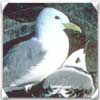 |
Black-legged Kittiwake | Rissa tridactyla |
 |
Common Murre | Uria aalge |
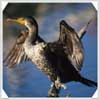 |
Double-crested Cormorant | Phalacrocorax auritus |
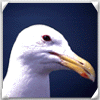 |
Glaucous-winged Gull | Larus glaucescens |
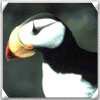 |
Horned Puffin | Fratercula corniculata |
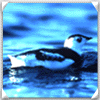 |
Kittlitz's Murrelet | Brachyramphus brevirostris |
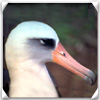 |
Laysan Albatross | Phoebastria immutabilis |
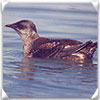 |
Marbled Murrelet | Brachyramphus marmoratus |
 |
Nothern Fulmar | Fulmarus glacialis |
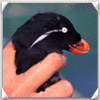 |
Parakeet Auklet | Aethia psittacula |
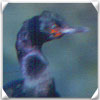 |
Pelagic Cormorant | Phalacrocorax penicillatus |
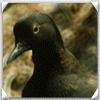 |
Pigeon Guillemot | Cepphus columba |
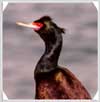 |
Red-faced Cormorant | Phalacrocorax urile |
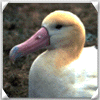 |
Short-tailed Albatross | Phoebastria albatrus |
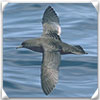 |
Short-tailed Shearwater | Puffinus tenuirostris |
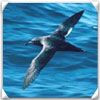 |
Sooty Shearwater | Puffinus griseus |
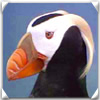 |
Tufted Puffin | Fratercula cirrhata |
 Deep Sea Crabs
Deep Sea Crabs